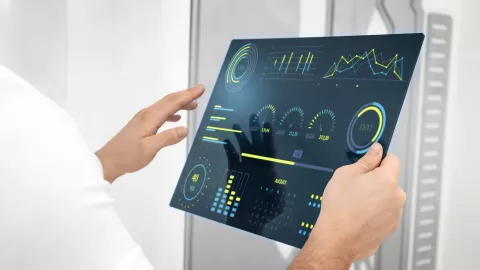The Power of Data Visualization for Business Decision-Making

In an era where businesses generate vast amounts of data daily, making sense of it all can be overwhelming. Raw numbers alone don’t tell a story—they need to be analyzed, interpreted, and communicated clearly. This is where data visualization comes in, transforming complex datasets into visual insights that drive better and faster decisions.
Why Data Visualization Matters
1. Turning Complexity into Clarity
Spreadsheets filled with numbers can hide valuable insights. Charts, graphs, and dashboards make patterns, trends, and outliers immediately visible, allowing decision-makers to grasp the big picture at a glance.
2. Speeding Up Decisions
Executives and managers often need to act quickly. Visual dashboards help them see performance metrics in real time—whether it’s sales figures, project progress, or customer satisfaction levels. This reduces the time spent digging through reports.
3. Improving Communication Across Teams
Not everyone is comfortable with raw data. Visualization bridges the gap by presenting information in a universally understandable way, making it easier for teams from sales, HR, or finance to collaborate effectively.
4. Spotting Opportunities and Risks
Well-designed dashboards can highlight growth opportunities, such as rising demand for a product, or flag risks, like declining employee engagement. These early signals help leaders respond proactively.
5. Driving Data-Driven Cultures
When data becomes accessible and easy to interpret, employees are more likely to use it in their daily decision-making. This creates a culture where intuition is backed by facts, leading to more consistent results.
Practical Applications in Business
- Sales and Marketing: Track conversions, campaign ROI, and customer behavior.
- Project Management: Visualize timelines, workloads, and resource allocation.
- HR: Monitor hiring funnels, turnover rates, and employee engagement.
- Finance: Analyze cash flow, expenses, and revenue forecasts in real time.
Integrated platforms like Bizon360 take this a step further by combining CRM, project management, and HRM data into unified dashboards, giving leaders a 360° view of the business.
Best Practices for Effective Data Visualization
- Keep it simple: Avoid clutter and focus on the most relevant KPIs.
- Choose the right format: Use bar charts for comparisons, line charts for trends, pie charts for proportions.
- Use color wisely: Highlight key insights without overwhelming the viewer.
- Ensure accuracy: Clean and verify your data before visualizing.
- Make it interactive: Dashboards that allow filtering and drilling down provide deeper insights.
Conclusion
Data visualization is more than just a design tool—it’s a powerful business strategy. By making data accessible, understandable, and actionable, organizations can make smarter decisions, faster.
In a world where every second counts, businesses that embrace data visualization not only gain clarity but also a competitive edge.
- Log in to post comments


